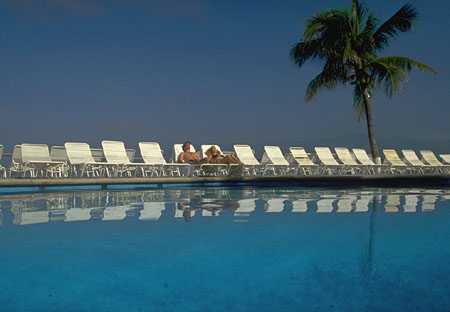












          |
   |
It is surprising how little Americans know about the art of relaxation. Relaxation is more than getting away from the work-a-day grind, and it is more than the absence of stress. It is something positive and satisfying-a feeling in which one experiences peace of mind. True relaxation requires becoming sensitive to one's basic needs for peace, self-awareness, thoughtful reflection-and the willingness to meet these needs rather than ignoring or dismissing them.

|
The continuing pressures of everyday life take a heavy toll on the physical and mental well-being of millions of people each year. Medical research into the origins of common diseases such as high blood pressure, heart disease, ulcers, and headaches shows a connection between stress and the development of such ailments. In the area of mental health, stress frequently underlies emotional and behavioral problems, including nervous breakdowns. Various environmental factors-from noise and air pollution to economic disruptions, such as un- employment. inflation, and recession -can make living conditions even more stressful. These conditions, in turn, can create a greater need for mental health services to help people cope more effectively with their environment.
In the course of a day, people are frequently distracted from their activities by personal problems – conflicts with family member, disagreements with employers, poor living or working conditions, boredom, loneliness––to name just a few. It is easy to get so preoccupied with living, thinking, organizing, existing, and working that a person disregards his or her needs for relaxation.
More people reared in our production – oriented society feel guilty, or at least ill –at–ease, when they are not actively involved in accomplishing tasks or producing things. Even their vacations become whirlwind productions that leave the participants exhausted after concentrating too many experiences into a short period of time. Such behavior undermines the value of vacation time as an opportunity for diversion, restoration of one’s energies, and gaining new experiences.
Unfortunately, some people pursue relaxation with the same concern for time, productivity and activity that they show in their everyday life patterns. Far too few people know how to turn off the body clocks and gain satisfaction out of just being instead of always striving. The secret in getting the best results from attempts at relaxation is simple: Find those activities which give you pleasure, and, when you pursue them, commit your energies to total mental and physical well-being. If your diversion results in an artistic product, musical skills, further education, a better physique, or whatever, that’s great. But, remember that relaxation, not achievement, is your main reason for participating in the activity.
Mental health specialists have come up with some suggestions for learning the art of relaxation. Below is a simple relaxation exercise that involves deep breathing, meditation and biofeedback. Give it a try!
Sit comfortably and quietly.
Tell yourself that you are going to use the next 5, 10, or 20 minutes to re-balance, to heal, to relax yourself.
Surrender the weight of your body, allowing the chair, or floor, to support you.
Close your eyes, gently cutting out visual stimulation and distraction.
As you inhale, repeat to yourself: “I AM”
As you exhale, say... “RELAXED.”
Continue to breath normally not trying to change it in any way. Just watch it happening and continue to repeat: “I AM” with inhalation; ... “RELAXED” with exhalation.
As your mind begins to wander, gently bring it back to the awareness of your breath and your statement “I AM RELAXED.” Be compassionate and loving with your "leaping frog" mind which wants to be anywhere but here.
Continue doing this for as long as you have established.
To conclude, discontinue the phrase and slowly stretch your hands and feet, your arms and legs, then your whole body.
Open your eyes a sliver at a time – like the sun coming up in the morning.
Continue on your way.
This page is from the U.S. Department of Health and Human Services, National Institute of Mental Health, Division of Communications and Education–Plain Talk series, Ruth Kay, Editor.
Diet and Exercise Log | Exercising Safely | An Exercise Calendar | Strength Training | Starting a Walking Program | Stretching Exercises | Relaxation Exercises | Living with Mindfulness | Intro to Exercise | Yoga
Disclaimer | Donate Now | Contact Us | Site Map | Store
|
©1999-2000; updates: 2002, 2004, 2005, 2007 Women's Heart Foundation, Inc. All rights reserved. Unauthorized use prohibited. The information contained in this Women's Heart Foundation (WHF) Web site is not a substitute for medical advice or treatment, and WHF recommends consultation with your doctor or health care professional. |